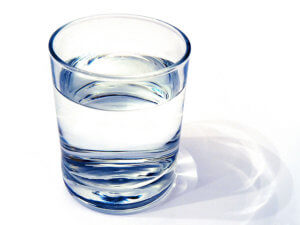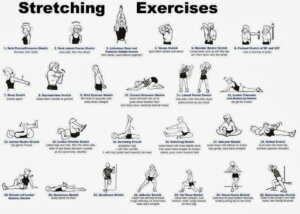Here are some quick tips you need to keep in mind if you are a senior citizen.
Drink Enough Water

If you don’t drink enough water to meet bodily needs you could end up with:
- digestive complications
- dry skin and hoarse voice
- decreased organ functions
- water retention problems
- muscle soreness
- joint soreness
- increased toxicity in the body
- poor metabolism of body fat
- excess body fat
- poor muscle tone and size
- persistent constipation
Sleep Well

Here are some sleep hygiene tips for elders who suffer from insomnia.
Don’t…
- … go to bed until you are ready to sleep
- … lie awake in bed, telling yourself you should sleep. If you are awake for more than 20 minutes or so, get up.
- … lie in bed if you are worried or anxious about something
- … keep looking at the clock
- … drink coffee, tea or other caffeinated drinks or alcohol before bedtime. The same goes for cigarettes
- … nap during the day
Do…
- … try to get up around the same time every morning
- … get some exercise each day, preferably during the morning or afternoon hours
- … have a small snack before bed (but no caffeine or alcohol!)
- … set the thermostat to a comfortable temperature
- … arrange your furniture and window coverings so that noise and light will be less bothersome
Exercise tips :

- Exercise is better performed early in the morning or in the evening.
- It should not be done on a full stomach
- People who have followed a sedentary or quiet lifestyle should begin an exercise program slowly.
- It is not important how quickly one advances to a higher level of fitness. Becoming fit eventually and maintaining that fitness is what matters.
- A slow and easy start can avoid musculo-skeletal injuries. Be sure to thoroughly warm up before beginning and cool down gradually by stretching, appropriate to the exercise. This is very important to prevent cramping and other discomforts.
- Choose activities that you like.
- Be realistic about what you can do.
- Exercising in a group is better than doing it alone because it makes it a social event and encourages continuous participation.
- One has to consult a doctor before starting an exercise program. Also stop and check with your doctor right away if you develop sudden pain, shortness of breath, or feel ill.
- Choose your method of exercise carefully! Make sure it is suitable for your body type. Avoid high-impact events. Certain exercises should not be performed when people have certain diseases. For eg:. people with diabetic retinopathy should not perform exercises that involve bending forward too much or standing on their head. People with weak heart should not perform strenuous exercise. Those who have had a heart attack cannot perform any exercise other than walking for a certain period after recovery.
- Be very certain to remain hydrated by continuously drinking water supplemented with vitamin C and electrolytes while exercising.
Even those confined to bed should have some kind of physical activity or atleast physiotherapy to avoid bedsores, chest infection, loss of strength of bones, constipation, and depression.

Strengthening exercises:
1.Finger squeeze: Strengthens hands; good for circulation. Straighten arms in front at shoulder level, palms down. Make a fist, then release. Turn palms up, make a fist and release.
2.Shoulder shrug: Strengthens your back and shoulders, helps relaxation. Lift shoulders up toward your ears, then back, down and relax.
3.Arm circles: Strengthens shoulders and upper back. Start with arms straight out to the side at shoulder level. Rotate arms from shoulders forward, then backward.
4.Shoulder touch: Increases flexibility of shoulders, elbows and helps tone upper arms. Start with arms straight out to the side at shoulder level. Bend elbow and bring palm of hands to shoulders. Turn palm away and push arm down to start position.
5.Leg flexion–extension: Strengthens hip muscles. Stand erect, holding onto a chair or table for support. Lift one leg forward, then back from the hip. Be careful not to lean forward and back.
6.Side leg lift: Strengthens hip and thigh muscles. Stand erect, holding onto a chair or table for support. Raise one leg out to the side and down. Try not to lean or bring your leg forward. You can try this lying on your side, too!
7.Alternate leg lunges: Strengthens upper thighs and inside of legs. Also stretches back of leg. Start with feet shoulder-width apart. Hold on to something for support if you like. Step forward about 18″ to 24″ with right leg. Keep the left heel on the floor. Shove off with the right leg and return to the start position.
8.Calf raises: Strengthens lower leg and ankle. Start with feet shoulder-width apart. Hold onto something for support if you like. Raise up on your toes, lifting heels. Slowly lower yourself back down to your heels.
9.Leg extension: Strengthens upper thigh muscles and tones lower abdomen. Sitting in chair, back straight, knees bent, and feet flat on the floor, tighten knee and raise foot up. Alternate with each leg.
10.Squat: Strengthens front thigh muscles. Start with feet shoulder-width apart. Hold on to the back of a chair for support. Keep back straight and slowly bend knees as if you are going to sit Slowly return to start position. Do not go down too far! This will improve as you get stronger.
11.Toe raises: Strengthens ankles. Standing or sitting with feet shoulder-width apart, raise your toes up off the floor as if tapping to music.
12.Ankle circles: Strengthens ankles. Standing or sitting, make circles with each ankle, to the right and then the left.
13.Abdominal strengthening: Strengthens stomach muscles providing support for your back. Stand or sit straight. Take a deep breath in through your nose, then slowly exhale through your mouth as if blowing out a candle. Feel your stomach go in as you blow out. Hold stomach tight after blowing out, then relax and repeat.
14.Sit-up: Advanced abdominal strengthening. Lay on the floor with your knees bent and feet flat. Reach with your arms toward your knees, raising your head and shoulders off the floor. You should readily feel your stomach muscles tighten. Slowly return head and shoulders to the floor. Work up to doing five-ten repetitions.
Flexibility exercises
1.Neck circles: Maintains joint motion. Standing, or sitting in a chair, slowly move chin over to one shoulder and then to the other as if nodding “no.” Slowly lift your chin up slightly and back down toward your chest as if nodding “yes.” Repeat several times.
2.Flexed leg back stretch: Maintains flexibility in torso, low back, and legs. Stand with knees slightly bent and feet shoulder-width apart. Slowly and gently slide hands down front of legs, bringing finger tips toward the floor. You should feel a stretch in the back of your legs. Hold for the count of five when you start to feel the stretch. Stay within your comfort range- no more than five repetitions.
3.Side bends: Maintains trunk flexibility. Stand with feet shoulder-width apart. Slide right hand down right leg towards knee. Repeat to left side. Hold five seconds; five repetitions to each side.
4.Trunk rotation: Maintains trunk flexibility. Stand with feet shoulder-width apart and knees slightly bent. Turn from your waist to the right, then left.
5.Back arch: Stretches abdominal wall, chest, maintains flexibility. Do not do this exercise if you have a history of back problems.
On stomach: Place hands by shoulders, slowly push up on arms and arch back. Keep hips down. Try to straighten elbows completely if back is comfortable. Return to stomach; three-four repetitions.
6.Overhead reach: Stretches shoulder girdle and rib cage. Take a deep breath in as you raise your arms overhead. Exhale slowly as you lower your arms behind your head or to your shoulders, then return to your sides.
7.Achilles stretch: Stretches the calf muscle. Stand facing a wall, with feet two-three feet away. Straighten arms, leaning into the wall. Move left leg forward 1/2 step, right leg backward 1/2 step or more. Keep right heel on floor. Lean toward the wall with weight on forward leg, stretching the heel tendon of the right leg. Hold five-ten seconds. Reverse legs; three-five repetitions.
8.Shin and quadriceps stretch: Kneel on both knees, turn to right and press down on right ankle with right hand and hold. Keep hips thrust forward. Do not sit on heels. Repeat on left side.
9.Hip and thigh stretch: Kneel with right knee directly above right ankle and stretch left leg backward so knee touches floor. Place hands on floor or seat of chair for balance.
Content Source- www.webhealthcentre.com
